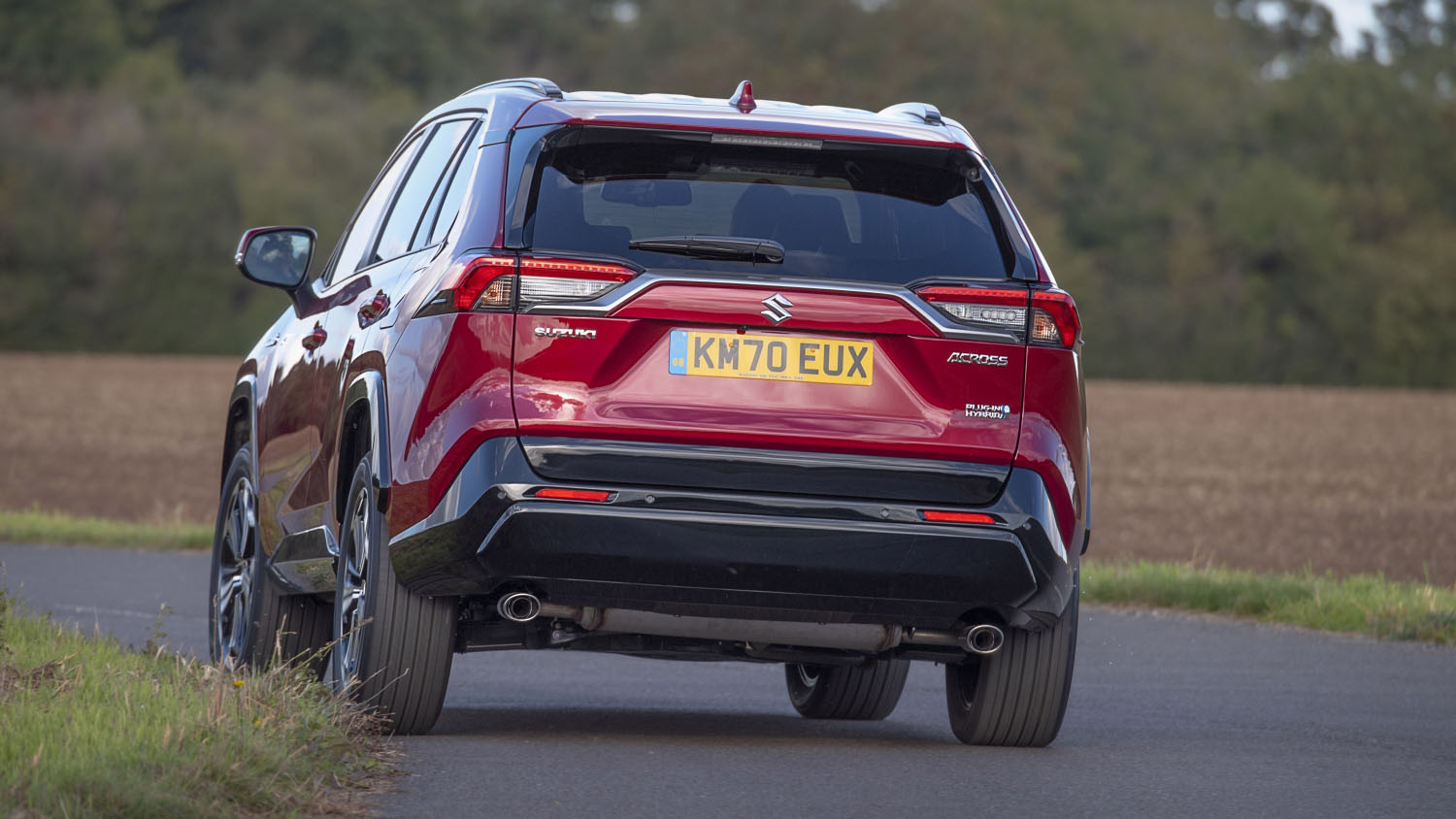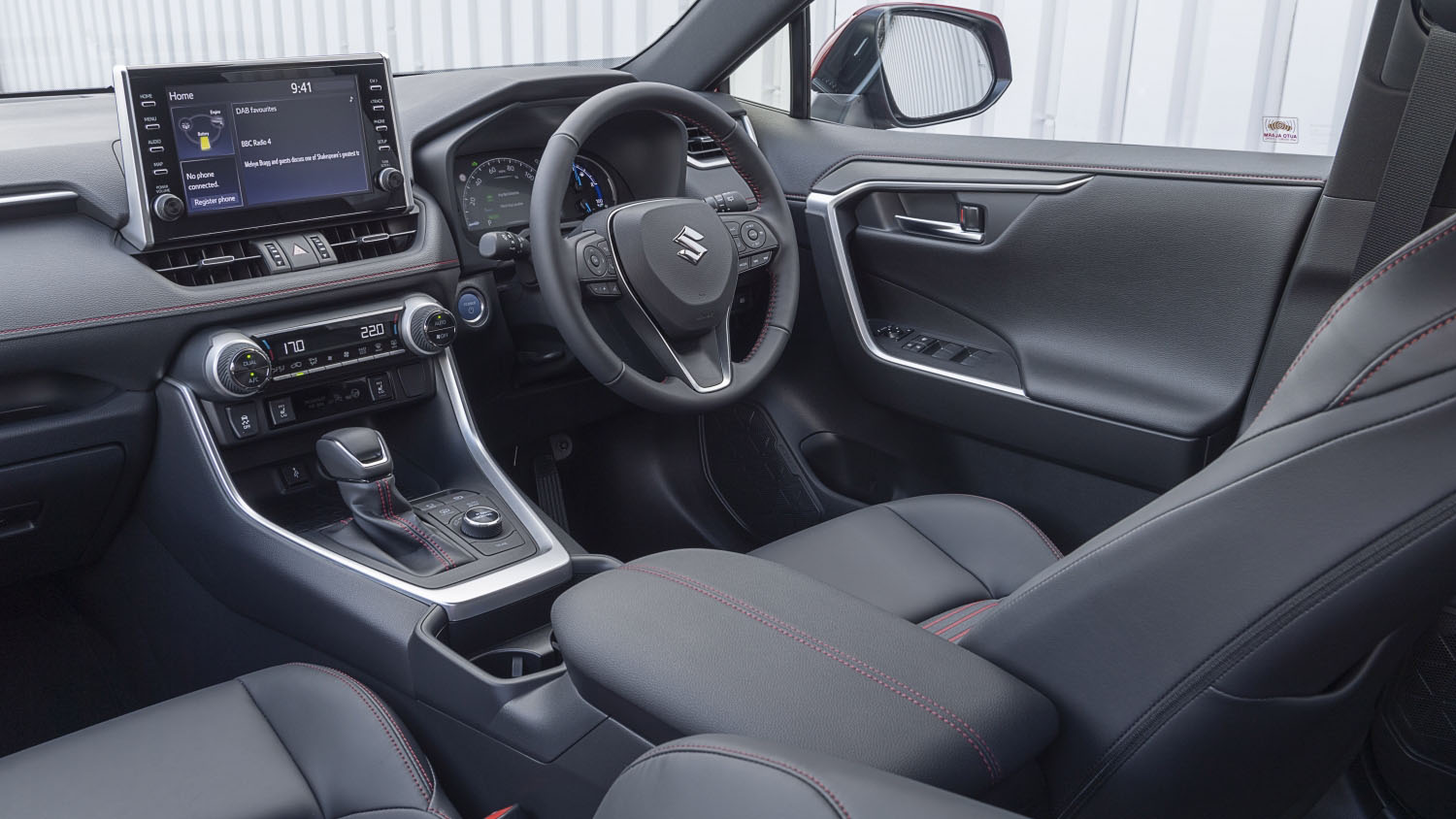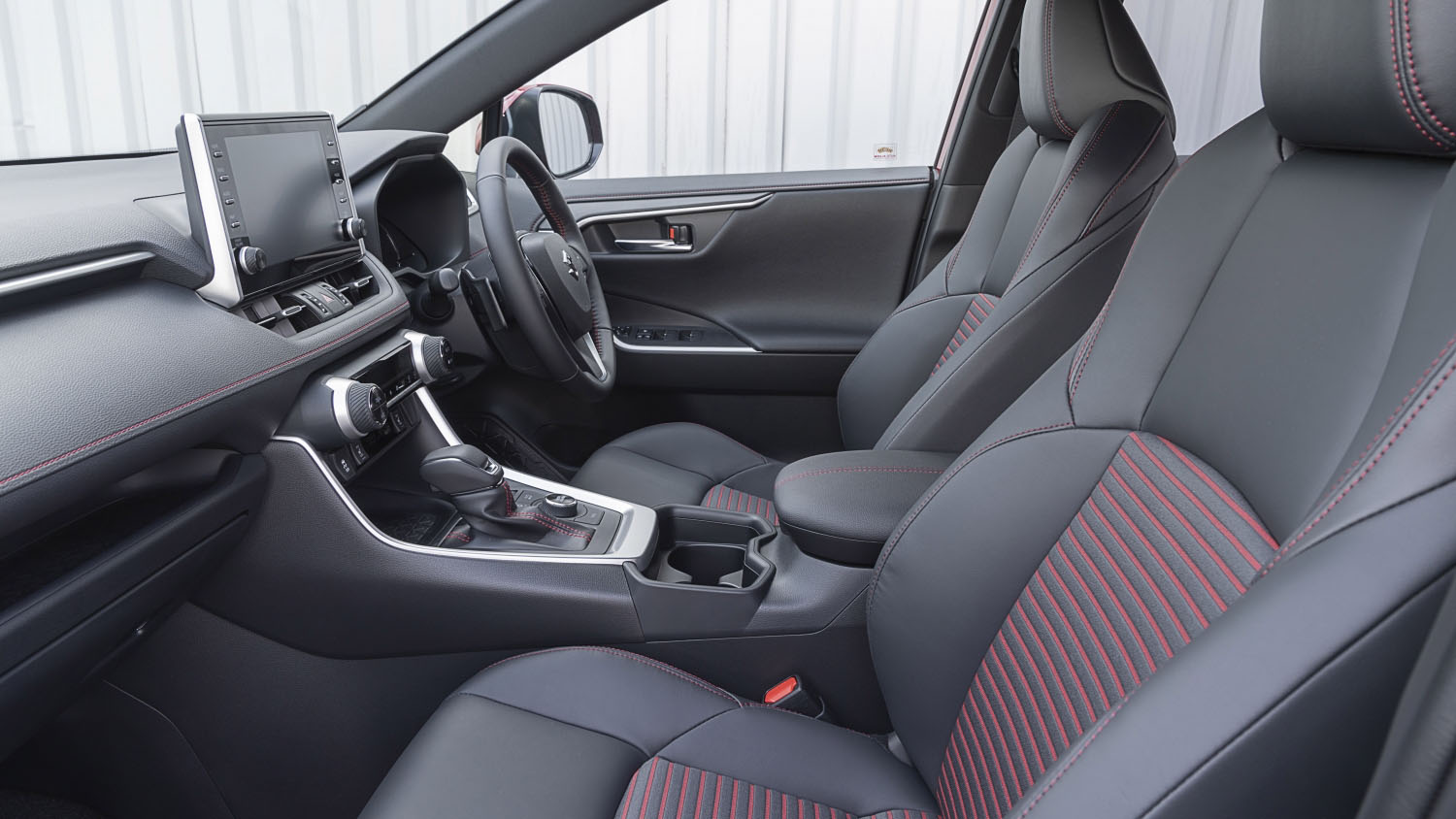
Interior
What is it like on the inside?
There’s pretty much nothing new, besides the ‘T’ on the steering wheel being swapped out for an ‘S’. This is a RAV4 cabin. So, plenty of pleasingly chunky switchgear, a mediocre 9.0-inch touchscreen interface (thankfully with proper shortcut keys and Apple and Android mirroring as standard) and solid build quality. It feels ruddy tough in here.
Obviously Suzuki hasn’t solved the Toyota foibles, of which there are several. For instance, the heated steering wheel button lives down by the driver’s knee, not with all the other controls for making the cabin and seats warm on the centre console. The traction control switch, meanwhile, is right next to the heater, instead of with all the driving mode controls on the centre console. And the auto main beam button? That’s also hidden at knee-height next to the door, rather than on the indicator stalk with all the other light controls. Weird.
The doors are also extremely lightweight and stubbornly refuse to close without a proper slam. The electric tailgate is a hideously slow throwback to the early days of motorised boots, and we’d sooner do without its infernal beeping and glacial operation. The boot is well-equipped with lashing hooks and under-floor stowage, though we found the parcel shelf to be a rattly, flimsy item. Space-wise, you’ve got a 490 litre load area, down 100 litres on the RAV4 which has a smaller battery eating into its cargo bay. With the seats folded near-flat, there’s over 1,100 litres on offer.
In the back, the Across’s rear seats don’t follow a ‘stadium’ set-up – they’re the same height as the front seats, so younger passengers will struggle for a decent view out. There’s adequate space for adults in the rear, and the centre tunnel is modest so it’s possible to seat three across the back without argument. It’s festooned with charging ports and storage cubbies.
Featured







